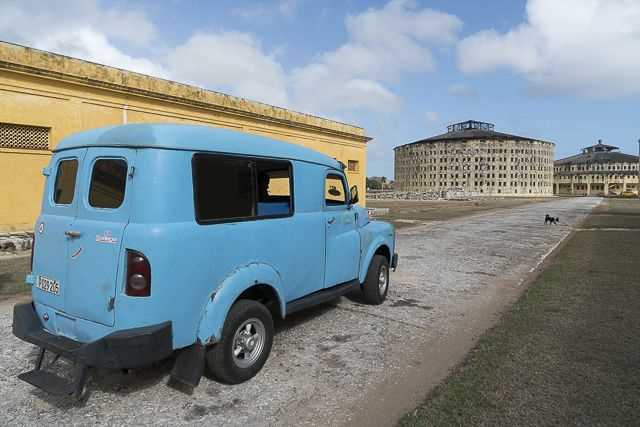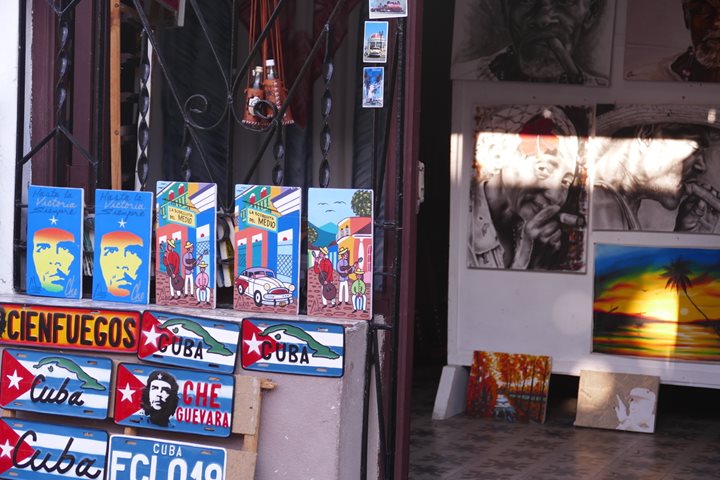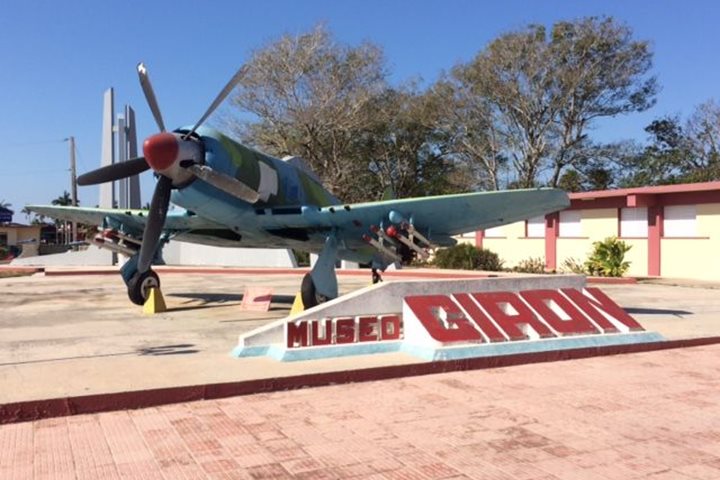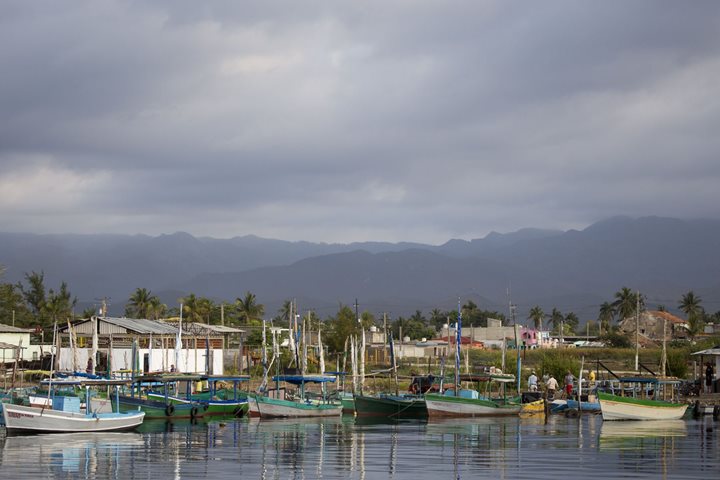Today was our much-anticipated visit to Isla de la Juventud. We explored the Presidio Modelo prison in which Fidel Castro was imprisoned, and afterwards visited a maternity clinic, and The Escuela de Arte, a school of arts for children, in the heart of the main town of Nueva Girona. We had a delicious lunch of Fidel’s favorite fish, hogfish, and explored the main promenade of town before heading back to the ship to sail on to Cayo Larga.
- Daily Expedition Reports
- 21 Feb 2018
Isla de la Juventud, 2/21/2018, Harmony V
- Aboard the Harmony V
- Cuba
Brenda Tharp, Naturalist/Certified Photo Instructor
For over 20 years, Brenda has used her photographs of the world to celebrate its beauty, and inspire others to protect what we have. Brenda grew up exploring the woods, lakes, and coastlines of New Jersey and New England and her family traveled regul...
Read MoreShare Report
Related Reports
3/15/2018
Read
Harmony V
Bay of Pigs
This morning we departed Cienfuegos, our base of operations, to explore one of the most fascinating areas of Cuba, both from a historical and a natural history point of view. One of the highlights of the area is the Playa Giron Museum, a testimony to a crucial historical event in the modern history of Cuba and Cuba-US relations. This area was the stage for the Bay of Pigs Invasion, a failed military invasion of Cuba, authorized by JFK and undertaken by the CIA-trained Brigade 2506, a counter-revolutionary military group made up of mostly Cuban exiles who traveled to the United States after Castro's takeover, on April 17, 1961. Launched from Guatemala and Nicaragua, the invading force was defeated within three days by the Cuban Revolutionary Armed Forces, under the direct command of Fidel Castro. The failed invasion, hailed as a major David-versus-Goliath victory against Imperialism, helped to strengthen the position of Castro's leadership, made him a national hero, and deepened the rift between the former allies. It also strengthened the relations between Cuba and the Soviet Union. But the historical interest of the area is far from the only attractive thing about it. The Bay of Pigs is located within the Zapata Swamp, one of the most important protected natural areas in Cuba. Within this geographical location are numerous areas designated for environmental preservation, such as Zapata Swamp Natural Reserve and Las Salinas wildlife sanctuary, part of the larger Ciénega de Zapata Biosphere Reserve (IUCN category VI) which in total is over 6,000 km² and the largest protected area, not only in Cuba, but also the Caribbean. The swamp is not only known for its size but also for being the best-preserved wetland in the Antilles, designated as a "Wetland of International Importance" by the Ramsar Convention on Wetlands in 1971. This protected area is home to over 900 indigenous plant species, 175 species of birds, 31 species of reptiles and over 1000 species of invertebrates. Some of the most notable are local endemics to the area, such as the Zapata wren, Zapata rail, and the Zapata sparrow. The Zapata Swamp is also one of the only habitats of the smallest bird species on our planet: the bee hummingbird. Our explorations of the area began with an early, pre-sunrise departure for the keenest among us, our destination is the Bermejas region of the Zapata Swamp where we met our dedicated local birding guide, Orlando. We managed to see a total of 19 endemic species, including the Cuban bare-legged owl and Cuba tody, in just two hours! Outstanding! After a visit to the Bay of Pigs Museum, we all spent some time at a stunning area of coastline named “Punta Perdiz,” where some relaxed under the shade of palm trees while others took to the crystal-clear waters to explore patches of coral reefs home to dozens of colourful Caribbean reef fish species. After our water activities we travelled on to the picturesque coastal town of Playa Larga, a small fishing village increasingly opening up to tourism, where we had a wonderful lunch of fresh catch-of-the-day before being treated to an update on the conservation status and work in the area by National Park director Frank Medina. In the afternoon, we travelled to the small community of Palpite to visit the Korimakao Community Arts Group. Korimakao, an indigenous word that means “man who carries his house on his back,” was founded in August 1992 in the heart of the Zapata wetland, on the initiative of one of the leaders of Cuba’s 1959 socialist revolution, Faustino Pérez. After a visit to the area by Fidel Castro in 2001, the construction of the Korimakao Centre became one of the highest priority sociocultural projects in the country and is now an important source of local employment. What was initially thought of as a movement that would recruit local talent has begun to draw candidates from all over the country. This fascinating day ended with a visit to the small house of a villager, two blocks down from the centre, named the “Hummingbird House.” Plants and feeders in the garden of this house are an irresistible magnet to the country’s two hummingbird species, the emerald and the bee, as well as many more birds. None of us returned to Harmony V without great looks at possibly Cuba’s greatest natural marvel: the smallest bird in the whole wide world.
3/14/2018
Read
Harmony V
Trinidad
We had a wonderful day exploring Trinidad!We enjoyed music and local art, and learned about religion and history during our visits.







